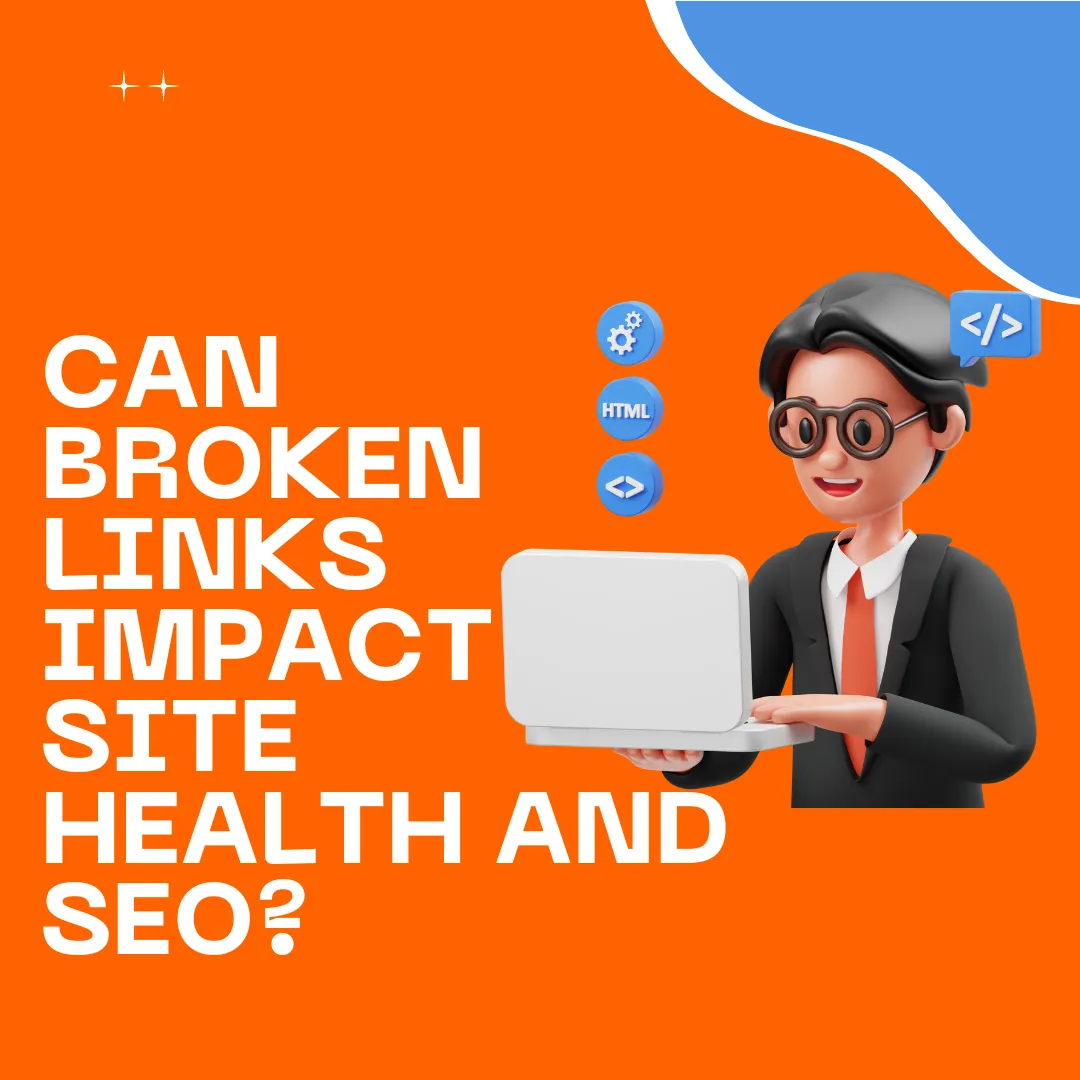25 min read Can Broken Links Impact Site Health and SEO?

Can Broken Links Impact Site Health and SEO?
In the ever-evolving landscape of SEO and website management, maintaining the overall health of a site is critical. Among various factors that contribute to a site's performance, broken links are often overlooked. However, these seemingly minor issues can significantly affect a website’s health and, subsequently, its search engine optimization (SEO).
This post will dive into the concept of site health, explore common site health issues (with a focus on broken links), and explain how these issues can impact SEO. We’ll also discuss practical solutions to improve site health and ensure optimal performance.
What is Site Health?
Site health refers to the overall condition of a website in terms of its performance, accessibility, user experience, and compliance with SEO best practices. It is a measure of how well your website operates, both in terms of user experience and its ability to rank in search engine results.
Several factors contribute to site health, including technical SEO elements, page loading speeds, security features, and mobile responsiveness. Search engines like Google use algorithms to evaluate these aspects and determine whether a website is fit to be ranked at the top of search engine results pages (SERPs).
A website with poor site health is less likely to be displayed to users, leading to reduced traffic, conversions, and overall success.
What Are the Common Site Health Issues?
Technical SEO-Related Site Issues
A variety of technical SEO-related issues can significantly damage your site’s health. If left unchecked, these problems will hinder your website's ability to rank, perform well, and provide a satisfying user experience. Below are four common issues that affect site health.
1 Broken Links
Broken links, or dead links, refer to URLs that no longer lead to the intended destination. These links may result from deleted pages, changes in URL structure, or mistyped URLs. A broken link typically returns a 404 error, signaling that the webpage cannot be found.
Broken links not only frustrate users but also send negative signals to search engines. When a search engine’s crawlers encounter a broken link, they cannot effectively index the site’s content, which can lower the website's ranking in search engine results.
Types of Broken Links:
- Internal Broken Links: Links that lead to missing pages within the same website.
- External Broken Links: Links that direct to pages on other websites that no longer exist or have moved.
2 Poor Site Speed
Site speed refers to how quickly web pages load when a user attempts to access them. Search engines prioritize websites that offer faster loading times because they enhance the user experience. Sites with slow loading times can see higher bounce rates, lower engagement, and decreased SEO rankings.
Several factors can contribute to slow site speeds, including large image sizes, inefficient code, poor hosting, and excessive HTTP requests. In today’s fast-paced world, users expect websites to load in under 3 seconds, and anything beyond that can lead to poor site health.
3 Poor Site Structure
Site structure refers to how content is organized and linked on your website. A well-structured website makes it easier for search engines to crawl and index pages. Conversely, a poorly organized website can confuse both users and search engine crawlers, leading to lower rankings.
An optimal site structure is characterized by clear navigation, logical grouping of content, and proper use of internal links. It helps search engines understand the relationships between different pages and how they are prioritized.
4 Mobile Unfriendliness
Mobile-friendliness is a key ranking factor in Google’s algorithm. With the majority of internet traffic now coming from mobile devices, websites that don’t offer an optimal experience on mobile platforms suffer poor site health.
A website that isn't mobile-friendly may have text that is too small to read, links that are difficult to click, and content that doesn’t adjust to different screen sizes. This leads to a frustrating user experience and higher bounce rates, all of which negatively impact SEO.
Impact of Site Health Issues on SEO
Issues related to site health can lead to serious SEO consequences. Below are three major impacts:
1 Low Search Engine Ranking
The primary goal of SEO is to improve a website's visibility on search engines. When site health issues like broken links or slow site speed arise, search engines may penalize your website, resulting in lower rankings. Search engine crawlers are programmed to evaluate several aspects of site health, and any deficiencies can prevent your site from appearing in top search results.
For example, broken links can prevent crawlers from indexing your website's pages, leaving important content out of the search engine’s database. This directly impacts your ranking.
2 Poor User Experience
User experience (UX) is a critical component of both site health and SEO. A website plagued by broken links, poor navigation, or slow page speeds will discourage visitors, increasing bounce rates and lowering the chances of conversion. In fact, Google’s algorithms are increasingly taking UX metrics into account, making it essential for websites to offer a seamless experience.
When users encounter broken links, it interrupts their journey, leaving them frustrated and more likely to abandon the website. This poor experience can lead to a lower dwell time, another factor considered in SEO rankings.
3 Decreased Authority and Credibility
Trust is crucial in building authority online. When a website is riddled with issues like broken links, poor loading speeds, or unresponsive mobile designs, it diminishes the credibility of the site. Users are less likely to trust a website that looks outdated, slow, or difficult to navigate.
Additionally, authority websites are more likely to attract backlinks from reputable sources, further boosting their SEO efforts. On the other hand, poor site health can lead to fewer backlinks, reducing a website’s authority and organic reach.
How to Solve Site Health Issues
Now that we’ve discussed common site health issues and their impact on SEO, let’s look at some practical steps to improve site health.
1 Improve Site Loading Speed
Improving site speed is one of the easiest ways to enhance both user experience and SEO. Here are a few tactics:
- Optimize Images: Compress and resize images to reduce loading times.
- Minify Code: Remove unnecessary characters and spaces from HTML, CSS, and JavaScript.
- Use Browser Caching: Enable browser caching so repeat visitors don’t have to reload the entire website every time they visit.
- Upgrade Hosting: Choose a faster and more reliable hosting provider for better performance.
2 Use High-Quality Content
High-quality content not only helps to engage users but also signals to search engines that your site is valuable and trustworthy. Focus on creating relevant, informative, and well-structured content that solves users' problems. Additionally, keep content fresh by regularly updating your site with new blog posts or articles.
3 Fix Broken Links
Fixing broken links is critical to maintaining good site health and SEO rankings. Here’s how you can address broken links:
- Use Link Checkers: Tools like Google Search Console or Ahrefs can identify broken links on your site.
- Redirect Broken URLs: Set up 301 redirects to guide users to the correct pages when encountering broken links.
- Update External Links: Regularly check for external links that may no longer work, and replace them with updated or alternative resources.
- Maintain Clean URL Structures: Ensure all internal and external links are properly formatted and lead to active, relevant pages.
By addressing broken links, you not only enhance user experience but also improve your site's crawlability, which is vital for SEO success.
Final Thoughts
Site health is a crucial factor in determining your website's performance, user experience, and SEO success. Broken links, poor site speed, and other common site health issues can significantly hinder your website’s ability to rank well in search engines and attract visitors.
Addressing these problems through regular audits, technical optimization, and attention to detail can make a tremendous difference in both site health and SEO performance. By maintaining a clean, efficient, and user-friendly website, you’ll not only improve your rankings but also build lasting credibility and trust with your audience.
4o






































































